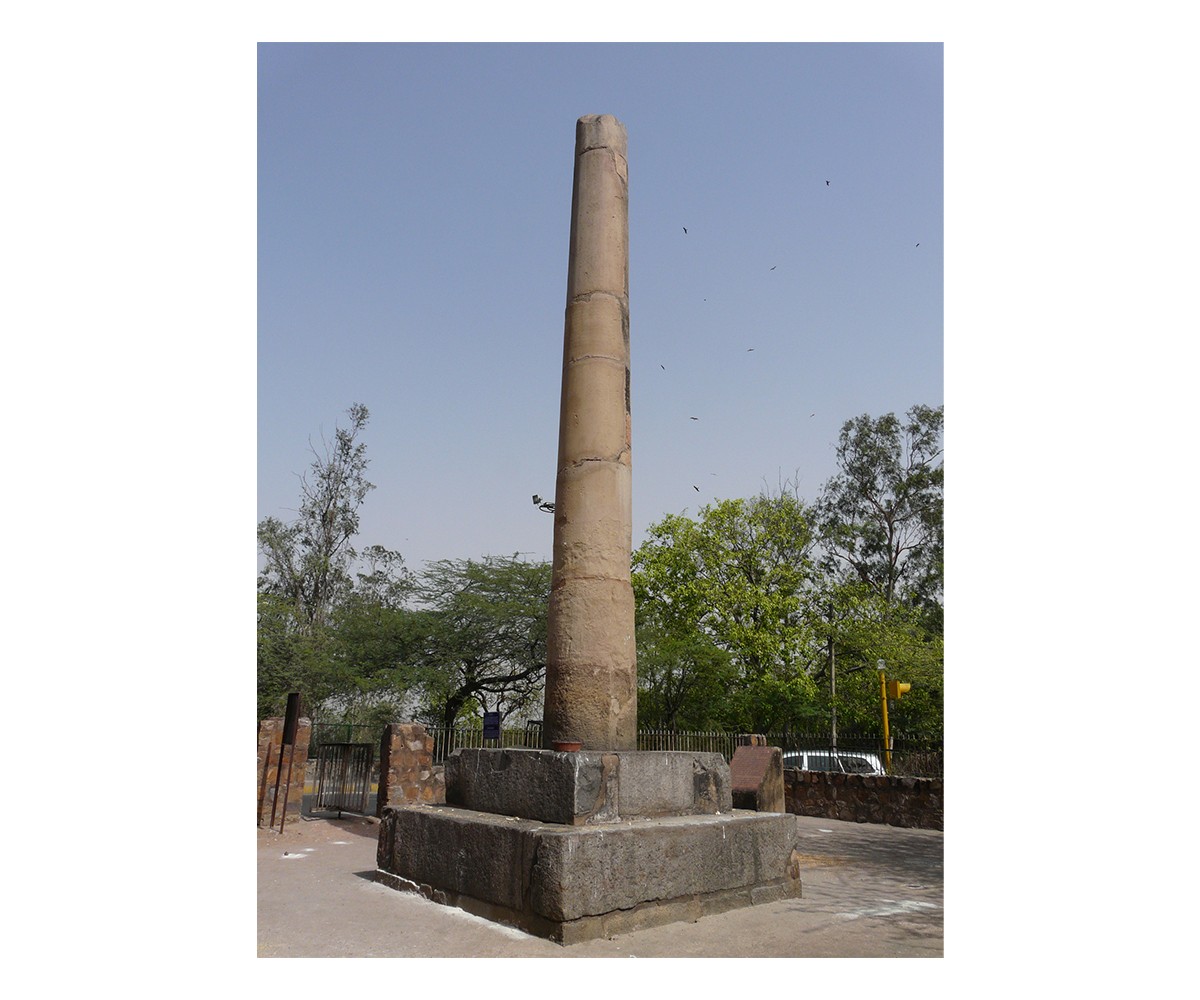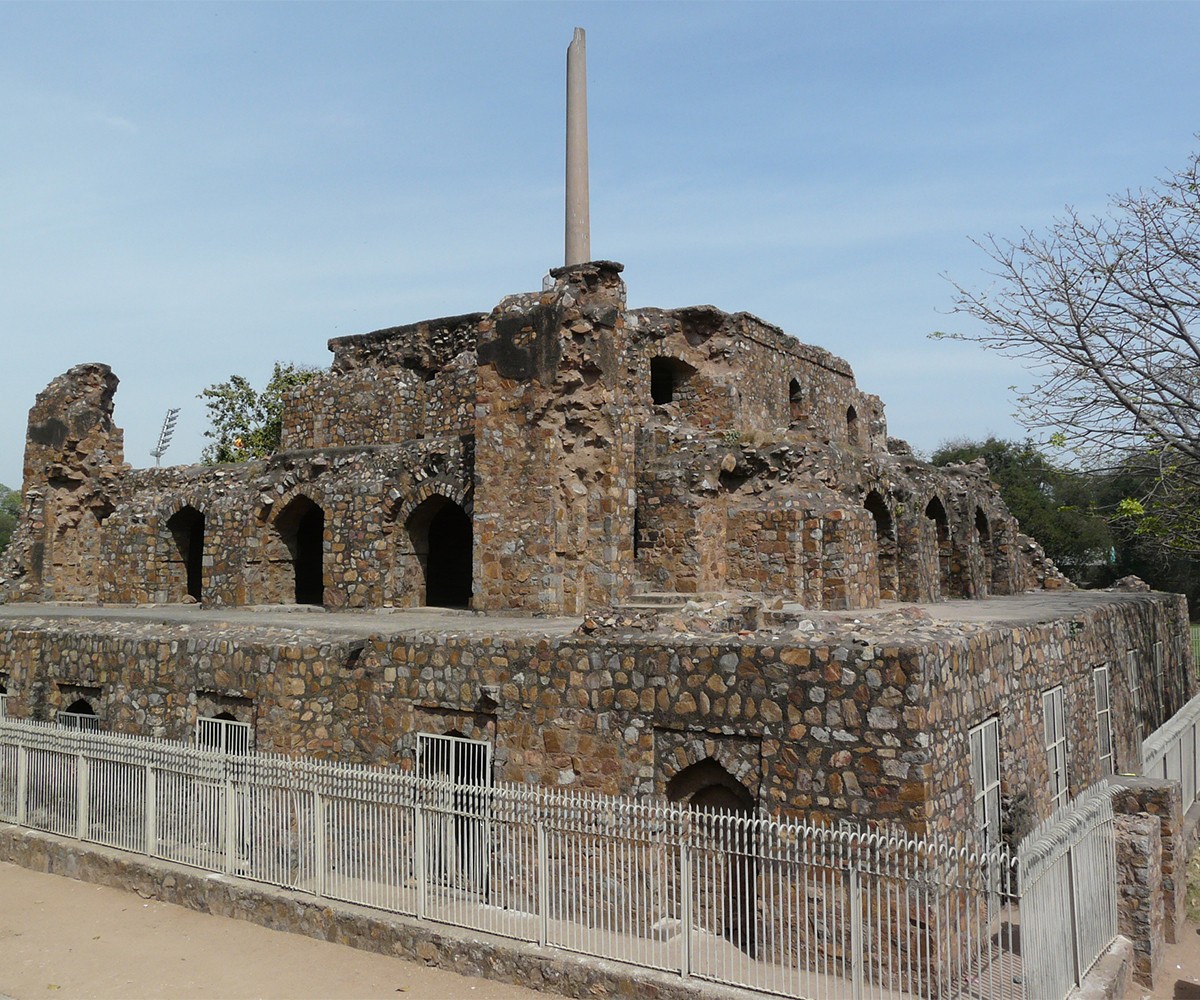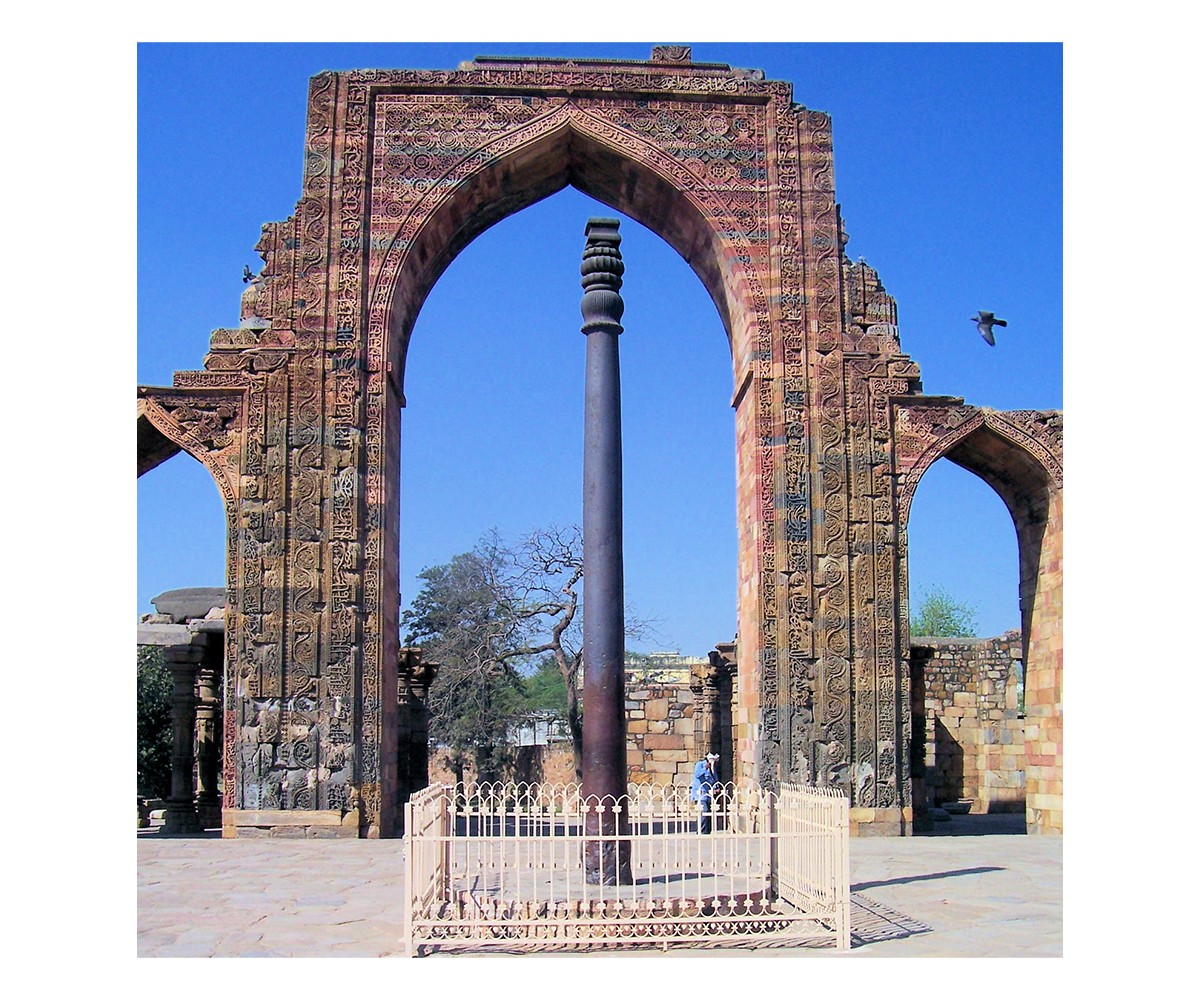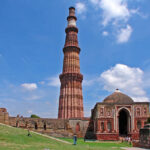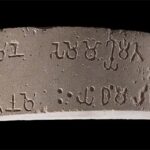Firoz Shah Tughlaq Moves Two Ashokan Pillars to Delhi
1351–1388
Two Ashokan pillars, from near present-day Ambala and Meerut, are transplanted to Delhi by the sultan Firoz Shah Tughlaq. Historians describe this move as one of historical appropriation, linking Tughlaq’s rule with what were then considered mythic monuments. Similarly, in the early eleventh century, sculptures from Kalinga temples built by the Western Ganga dynasty were taken by Rajendra Chola I as a symbol of his conquest of the Ganga.
A present-day theory also suggests that a few decades later, Anangpal Tomar relocated a Gupta-era iron pillar to Delhi, which was then repurposed by Iltutmish in the thirteenth century. Firoz Shah’s act of appropriation is in line with how rulers of Central Asian descent engaged with South Asian histories. His reign sees not just the incorporation of Indic history in architecture, but is also defined by a constant reference to earlier Delhi architecture, in the form of restorations of earlier sultanate monuments and tombs, which already incorporate subtle temple influences as a result of employing Indian artisans.
Bibliography
Sen, Colleen Taylor. Ashoka and the Maurya Dynasty: The History and Legacy of Ancient India’s Greatest Empire. Sonipat, Haryana: Reaktion Books, 2022.
Flood, Finbarr Barry. Objects of Translation: Material Culture and Medieval “Hindu-Muslim” Encounter. New Jersey: Princeton University Press, 2009.
Feedback 
This entry appears in
Art in South Asia
Visit Timeline
Associated Timeline Events
First Published: March 11, 2024
Last Updated: May 21, 2024



